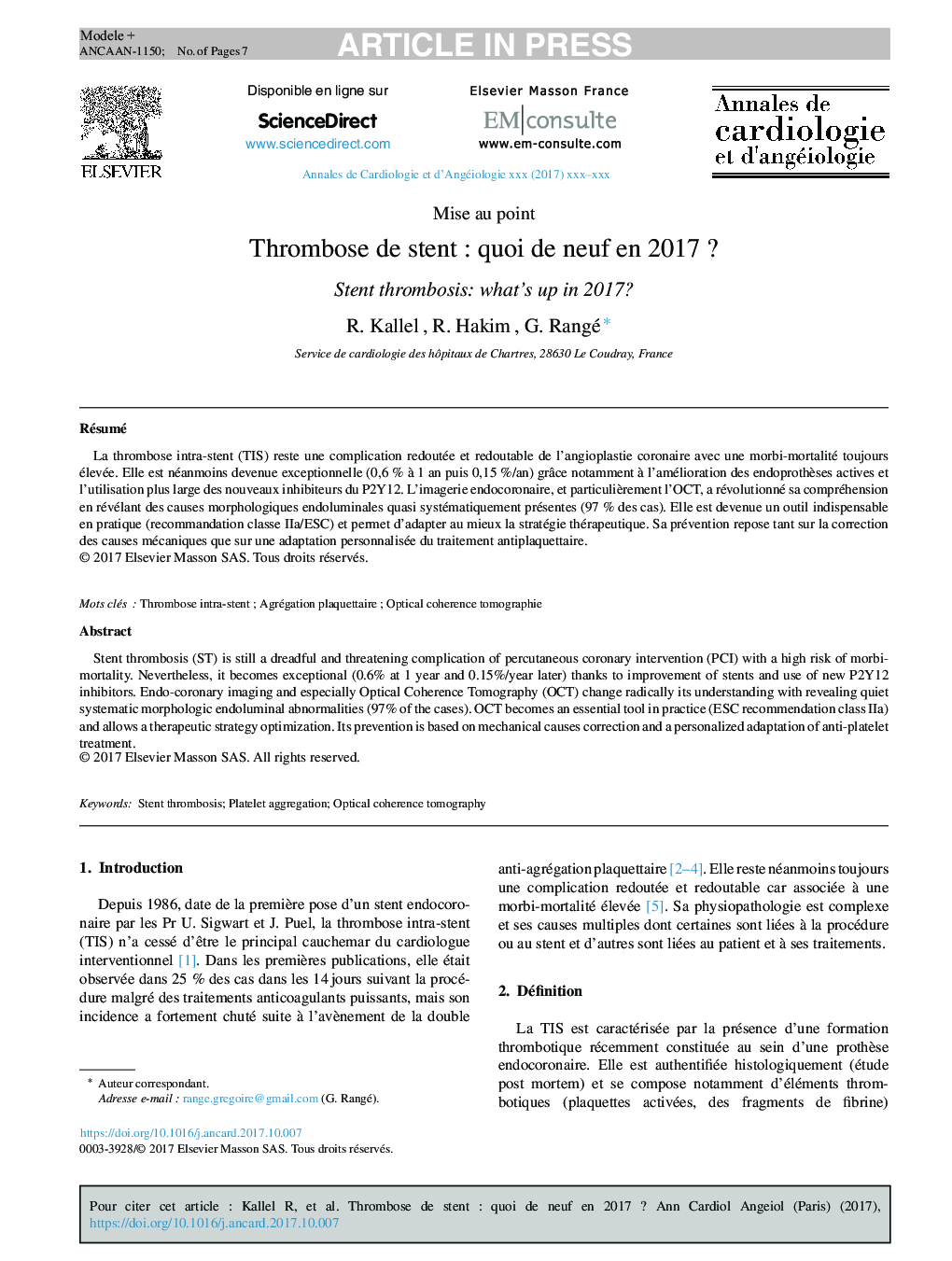| Article ID | Journal | Published Year | Pages | File Type |
|---|---|---|---|---|
| 8652295 | Annales de Cardiologie et d'Angéiologie | 2017 | 7 Pages |
Abstract
Stent thrombosis (ST) is still a dreadful and threatening complication of percutaneous coronary intervention (PCI) with a high risk of morbi-mortality. Nevertheless, it becomes exceptional (0.6% at 1 year and 0.15%/year later) thanks to improvement of stents and use of new P2Y12 inhibitors. Endo-coronary imaging and especially Optical Coherence Tomography (OCT) change radically its understanding with revealing quiet systematic morphologic endoluminal abnormalities (97% of the cases). OCT becomes an essential tool in practice (ESC recommendation class IIa) and allows a therapeutic strategy optimization. Its prevention is based on mechanical causes correction and a personalized adaptation of anti-platelet treatment.
Related Topics
Health Sciences
Medicine and Dentistry
Cardiology and Cardiovascular Medicine
Authors
R. Kallel, R. Hakim, G. Rangé,
